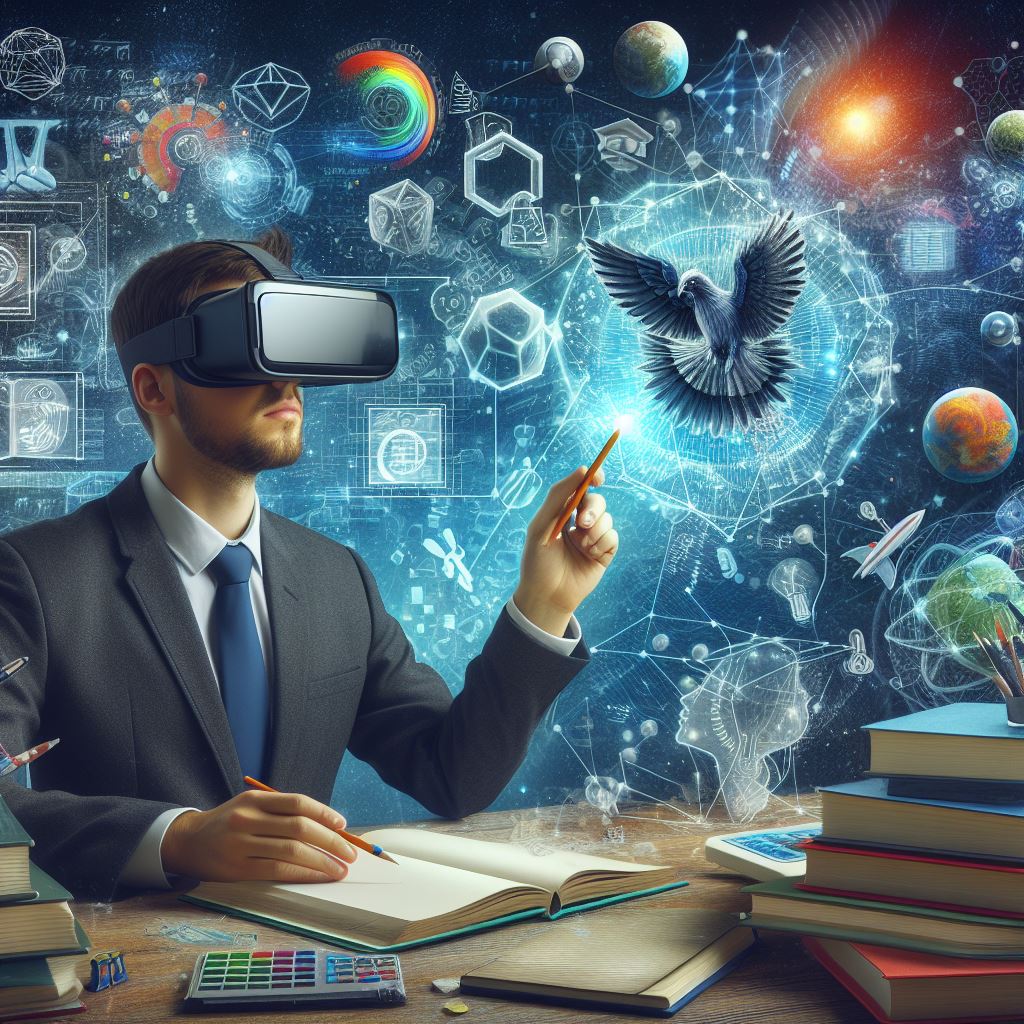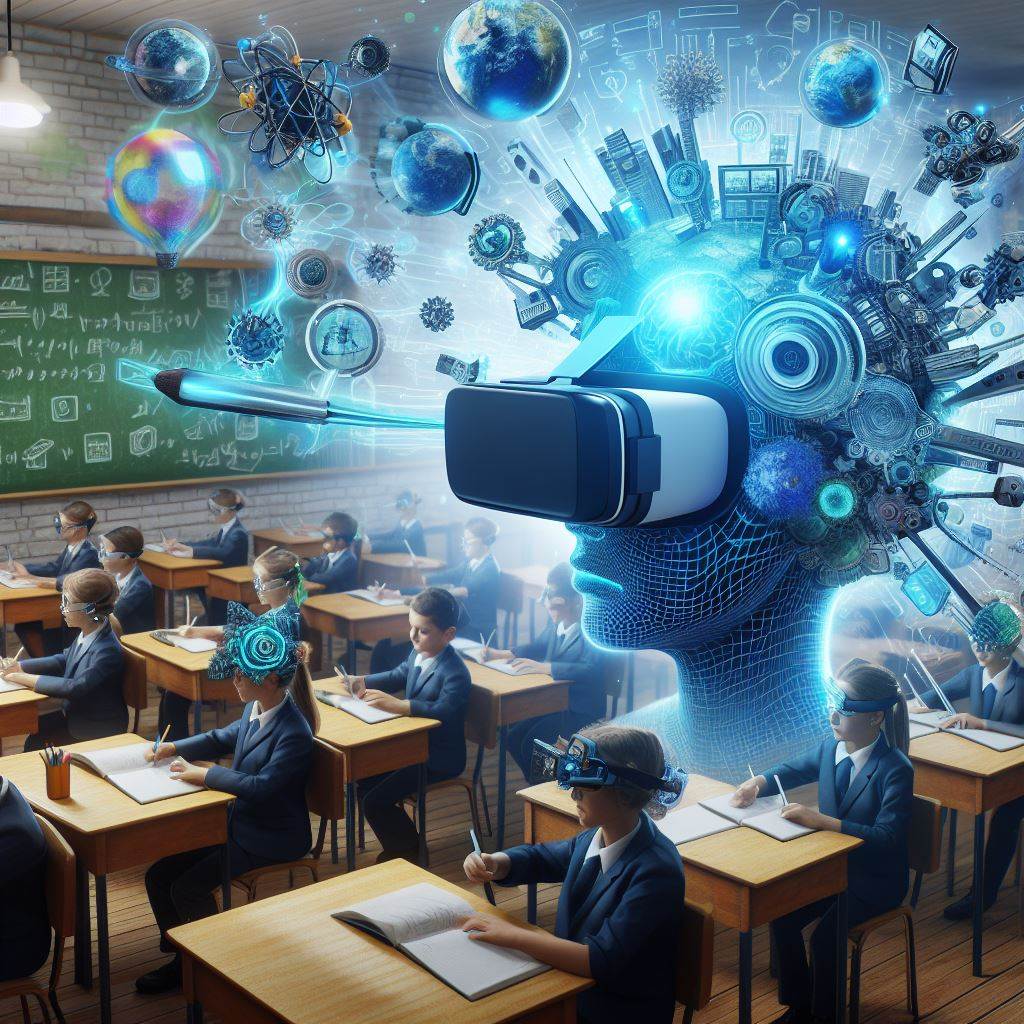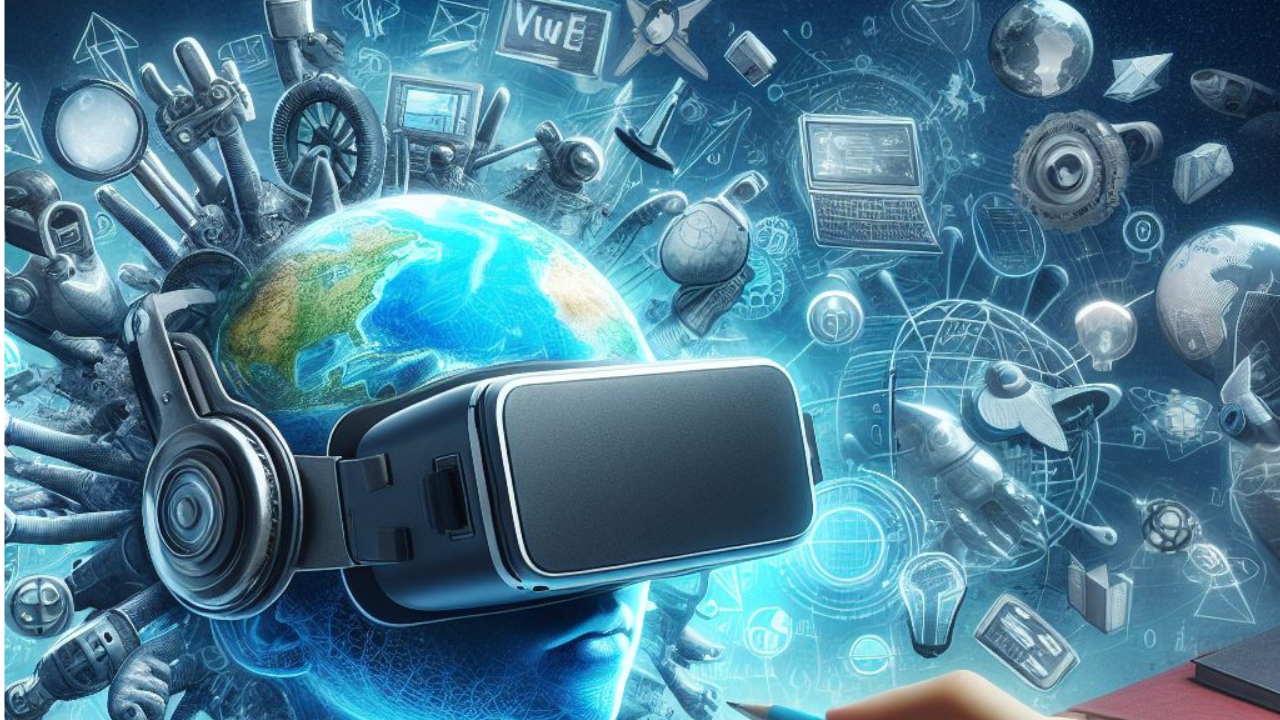Integrating Virtual Reality (VR) and Augmented Reality (AR) in Educational Technology: Enhancing Immersive Learning Experiences
Introduction
In recent years, virtual reality (VR) and augmented reality (AR) technologies have emerged as powerful tools with the potential to revolutionize education. These immersive educational technology(s) offer unique opportunities to create engaging and interactive learning environments, making complex subjects more accessible and understandable for students. In this article, we explore the benefits, challenges, and prospects of integrating VR and AR into educational settings.

Benefits of VR and AR in Education Technology
- Immersive Learning Experiences:
- VR and AR provide students with immersive experiences that transport them to virtual worlds or overlay digital information onto the real world. By simulating real-world scenarios, these technologies enhance understanding and engagement.
- For example, medical students can practice surgical procedures in a realistic VR environment, while history students can virtually explore ancient civilizations.
- Active Learning and Exploration:
- VR and AR encourage active learning by allowing students to interact with 3D models, manipulate objects, and explore concepts hands-on.
- Students can dissect virtual frogs, explore the solar system, or walk through historical landmarks—all within the classroom.
- Enhanced Engagement:
- Traditional teaching methods often struggle to capture and maintain students’ attention. VR and AR captivate learners by making education more interactive and enjoyable.
- Research shows that these technologies improve student engagement and motivation.
Case Studies of Educational Technology: Successful Implementation
- Stanford University’s Virtual Human Interaction Lab:
- Stanford uses VR to create empathy-building experiences. Students step into the shoes of others, such as homeless individuals or victims of discrimination, fostering understanding and compassion.
- Microsoft’s HoloLens in Medical Education:
- Medical schools use Microsoft’s HoloLens AR headset to visualize complex anatomical structures. Students can explore 3D models of organs and practice surgical procedures.
- Google Expeditions:
- Google Expeditions offers VR field trips to various locations worldwide. Teachers guide students through immersive experiences, enhancing geography and history lessons.
- Educational Technology
Impact on Student Engagement and Retention and Educational Technology
- VR and AR improve knowledge retention by providing memorable experiences. Students remember what they see and do more effectively than what they read or hear.
- A critical review of the literature suggests that VR positively impacts cognitive, behavioural, and affective engagement in the classroom.

Challenges and Considerations
- Cost and Accessibility:
- VR and AR hardware can be expensive, hindering widespread adoption in schools with limited budgets.
- Institutions must invest in devices, software, and teacher training to ensure effective use.
- Inadequate Knowledge and Training:
- Many educators lack awareness of AR and VR’s potential. Training programs are essential to build confidence in using these technologies effectively.
- Content Quality and Development:
- High-quality educational content is crucial. Institutions need access to well-designed VR and AR applications aligned with curriculum goals.
Future Trends and Innovations in Educational Technology
- Mobile AR and Wearables:
- As mobile devices become more powerful, AR apps on smartphones and wearables (e.g., smart glasses) will play a significant role in education.
- Collaborative VR Spaces:
- VR environments that allow multiple users to interact simultaneously will facilitate collaborative learning experiences.
- Personalized Learning:
- Adaptive VR and AR content tailored to individual student needs will enhance personalized learning.
Practical Tips for Educators
- Start Small:
- Begin with simple VR or AR experiences to introduce students to the technology gradually.
- Curriculum Integration:
- Align VR and AR activities with existing lesson plans to enhance learning outcomes.
- Assess Impact:
- Regularly evaluate the effectiveness of VR and AR in improving student engagement and understanding.
In conclusion, integrating VR and AR into educational technology holds immense promise. By addressing challenges and staying informed about emerging trends, educators can create immersive learning experiences that prepare students for the future. 🌟
More Interesting Articles
Revolutionizing Online Learning: How Artificial Intelligence Crafts Personalized Education Journeys

